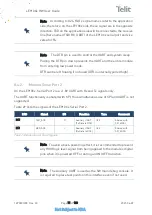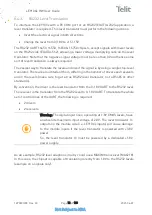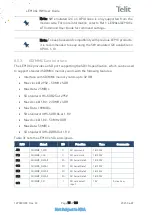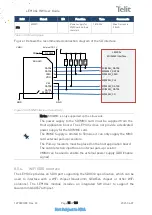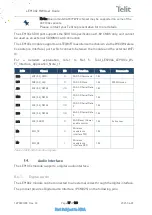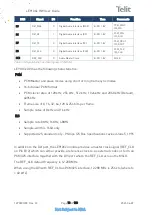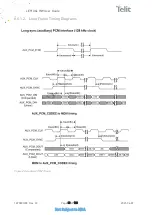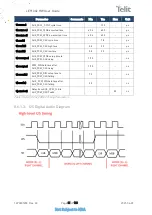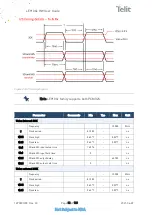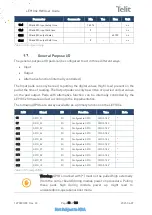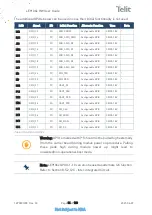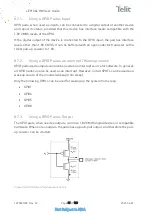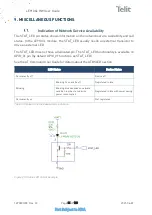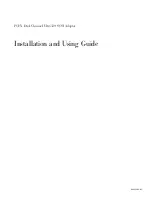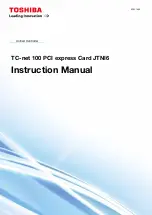
LE910Cx HW User Guide
1VV0301298 Rev. 33
Page 72 of 128
2021-06-29
Not Subject to NDA
8.4.3.
RS232 Level Translation
To interface the LE910Cx with a PC COM port or an RS232 (EIA/TIA-232) application, a
level translator is required. This level translator must perform the following actions:
•
Invert the electrical signal in both directions
•
Change the level from 0/1.8V to +15/-15V
The RS232 UART 16450, 16550, 16650 & 16750 chipsets accept signals with lower levels
on the RS232 side (EIA/TIA-562), allowing a lower voltage-multiplying ratio on the level
translator. Note that the negative signal voltage must be less than 0V and hence some
sort of level translation is always required.
The easiest way to translate the levels and invert the signal is by using a single chip-level
translator. There are a multitude of them, differing in the number of drivers and receivers
and in the levels (make sure to get a true RS232 level translator, not a RS485 or other
standards).
By convention, the driver is the level translator from the 0-1.8V UART to the RS232 level.
The receiver is the translator from the RS232 level to 0-1.8V UART. To translate the whole
set of control lines of the UART, the following is required:
•
2 drivers
•
2 receivers
Warning: The digital input lines, operating at 1.8V CMOS levels, have
an absolute maximum input voltage of 2.0V. The level translator IC
outputs on the module side (i.e. LE910Cx inputs) will cause damage
to the module inputs if the level translator is powered with +3.8V
power.
So, the level translator IC must be powered by a ded1.8V
power supply.
As an example, RS232 level adaption circuitry could use a MAXIM transceiver (MAX218).
In this case, the chipset is capable of translating directly from 1.8V to the RS232 levels
(example on 4 signals only).














